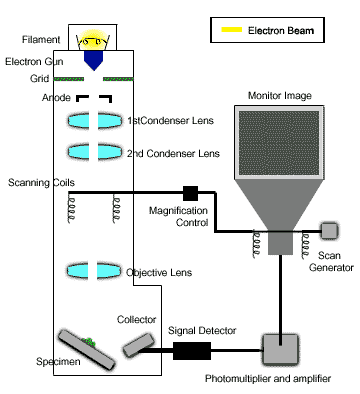 |
|
Electron Beam Path
© 2003 Wartburg College Biology Department |
Scanning
Electron Microscopy (SEM)
The
scanning electron microscope utilizes a focused beam of high energy
electrons that scans across the surface of the sample. As the beam
interacts with the sample it produces a large number of electrons
at or near the surface. In the SE mode, almost all the low energy
(secondary) electrons and some of the "backscatter" electrons
are collected at a positively biased collector. In the NSEM mode,
the SE collector is shut off which allows for detection of only the
higher energy (but weaker detection signal) "backscatter"
electrons using a Robinson detector. |
